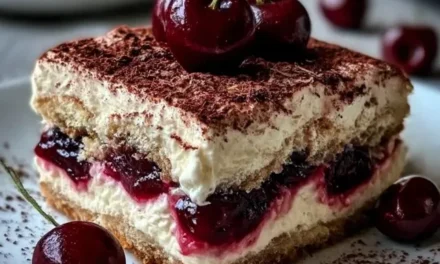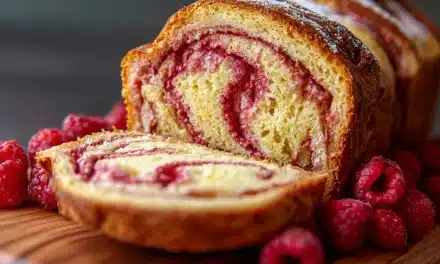Growing up, my grandma’s fermented pickles recipe was the stuff of legends. Every summer, our whole family would gather at her farmhouse, eagerly awaiting the moment when she’d pull those iconic glass jars from the root cellar. The moment we’d pry off the lids, the tangy, garlicky aroma would fill the air, instantly transporting us back to carefree childhood days.
Grandma’s fermented pickles were like liquid gold – crisp, flavorful, and perfectly balanced between salty and sour. She’d let them ferment for weeks, meticulously monitoring the process to ensure they turned out just right. And when we’d finally get to sink our teeth into those crunchy, flavor-packed pickles, it was like experiencing a little piece of heaven.
As I got older and started experimenting in the kitchen, I knew I had to master the art of fermented pickles myself. It took some trial and error, but after numerous batches and plenty of research, I finally cracked the code. This fermented pickles recipe is the result of that journey, and let me tell you – it’s the closest thing you’ll find to Grandma’s legendary pickles.
Table of Contents
Why This Fermented Pickles Recipe Will Become Your Go-To
What sets this fermented pickles recipe apart is the perfect balance of flavors and the satisfying crunch that comes from the fermentation process. Unlike store-bought pickles that can be overly salty or mushy, these fermented beauties are bursting with complex, nuanced flavors that will have you reaching for more.
The Secret Behind Perfect fermented pickles recipe
The key to this fermented pickles recipe lies in the slow, meticulous fermentation process. By allowing the cucumbers to soak in a brine solution for several weeks, the natural lactic acid bacteria go to work, transforming the veggies into crunchy, flavor-packed pickles. It’s a labor of love, but trust me, the end result is well worth the wait.
Essential Ingredients You’ll Need
To make these fermented pickles, you’ll need:
Cucumbers: Look for small, pickling-sized cucumbers that are firm and free of blemishes.
Salt: Kosher salt or sea salt are best for this recipe, as they don’t contain any additives that could interfere with the fermentation process.
Water: Use filtered or spring water, as the chlorine in tap water can inhibit the growth of beneficial bacteria.
Garlic: Fresh, whole garlic cloves add a pungent, savory note to the pickles.
Dill: Fragrant dill sprigs are a classic pairing with fermented pickles, adding a touch of herbal freshness.
Peppercorns: Black or mixed peppercorns contribute a subtle heat and complexity to the brine.
Step-by-Step fermented pickles recipe Instructions
Preparing Your fermented pickles recipe
Making fermented pickles is a relatively simple process, but it does require a bit of patience and attention to detail. In total, the active prep time is around 30 minutes, with the fermentation process taking 4-6 weeks to complete. You’ll need a few key pieces of equipment, including a large glass or ceramic vessel, a weight to keep the pickles submerged, and some cheesecloth or a breathable lid.
1- Start by thoroughly washing the cucumbers and trimming off any blemishes or stems. Slice them into spears or chips, depending on your preference.
2- In a large, nonreactive bowl, combine the salt and water, stirring until the salt has fully dissolved. Add the garlic, dill, and peppercorns, and give the brine a gentle stir.
3- Pack the cucumber spears or chips into your fermentation vessel, pressing them down gently to remove any air pockets. Pour the brine over the top, making sure the cucumbers are fully submerged.
4- Place a weight, such as a small plate or jar lid, on top of the cucumbers to keep them submerged. Cover the vessel with cheesecloth or a breathable lid to allow gases to escape during fermentation.
5- Let the pickles ferment at room temperature, out of direct sunlight, for 4-6 weeks, checking on them periodically and skimming off any scum that may form on the surface.
6- Once the pickles have reached your desired flavor and texture, transfer the jars to the refrigerator. Enjoy your fermented pickles as a snack, on sandwiches, or as a tangy accompaniment to your favorite meals.
Pro Tips for Success
To ensure your fermented pickles turn out perfectly every time, keep these pro tips in mind:
– Use the freshest, crispest cucumbers you can find for the best texture.
– Avoid using metal lids or utensils, as they can react with the brine and impart off-flavors.
– Monitor the fermentation closely, adjusting the temperature as needed to maintain an ideal environment for the lactic acid bacteria.
– Be patient! Rushing the fermentation process can lead to soggy, overly sour pickles.
– Experiment with different spice and herb combinations to create your own signature fermented pickles.
Serving and Storing Your fermented pickles recipe
Perfect Pairings for fermented pickles recipe
These fermented pickles are incredibly versatile and can be enjoyed in a variety of ways. Try them as a crunchy, tangy snack on their own, or pair them with grilled meats, creamy dips, or hearty sandwiches for a flavor-packed punch. They also make a great addition to salads, burgers, and grain bowls, adding a delightful crunch and acidity to balance out rich or heavy dishes.
For a truly satisfying pairing, I love serving these fermented pickles alongside a cold, hoppy craft beer or a tangy, vinegar-based cocktail. The complex flavors of the pickles and the beverages complement each other perfectly, creating a harmonious flavor experience.
Storage and Make-Ahead Tips
Properly stored, these fermented pickles can last for several months in the refrigerator. Once the fermentation process is complete, transfer the pickles and brine to clean, airtight jars or containers. Be sure to keep the pickles fully submerged in the brine to maintain their crispness and prevent spoilage.
For maximum freshness, I recommend consuming the pickles within 3-6 months of their fermentation date. If you notice any off-odors, discoloration, or signs of mold, it’s best to discard the batch and start fresh.
These fermented pickles also make an excellent make-ahead option. You can prepare a large batch and keep them on hand for quick snacking or easy meal prep. Just remember to give them a good stir or shake before serving, as the brine may separate over time.
Variations and Dietary Adaptations for fermented pickles recipe
Creative fermented pickles recipe Variations
Once you’ve mastered this classic fermented pickles recipe, the possibilities for experimentation are endless. Try swapping out the cucumbers for other crunchy veggies, like carrots, cauliflower, or green beans, for a delightful twist. You can also play with different herb and spice combinations, such as adding crushed red pepper flakes for a spicy kick or using fresh thyme or rosemary for an earthy note.
For a seasonal take, consider incorporating fresh ingredients like lemon zest, whole peppercorns, or even sliced jalapeños. The options are truly limitless, so have fun and let your creativity shine!
Making fermented pickles recipe Diet-Friendly
One of the best things about this fermented pickles recipe is that it’s naturally gluten-free, vegan, and low in carbs, making it an excellent option for those with dietary restrictions or preferences.
If you’re following a low-carb or keto diet, you can simply enjoy the pickles as a delicious, crunchy snack. They’re a great way to add flavor and texture to your meals without derailing your macros.
For our vegan and vegetarian friends, these fermented pickles make a fantastic addition to plant-based burgers, sandwiches, and salads. They add a welcome tangy and salty element that can really elevate your meatless dishes.
And since there’s no wheat or gluten in the recipe, those with celiac disease or gluten sensitivities can indulge in these fermented pickles without worry.
Frequently Asked Questions
Q: Can I use other types of cucumbers besides the small, pickling variety?
A: While you can use larger slicing cucumbers, I find that the smaller, pickling-sized cucumbers tend to work best for this fermented pickles recipe. They have a higher skin-to-flesh ratio, which helps them maintain their crunch during the fermentation process. Larger cukes may become softer and more prone to mushing.
Q: How long do I need to ferment the pickles?
A: The fermentation time can vary depending on factors like temperature and brine concentration, but generally, you’ll want to let the pickles ferment for 4-6 weeks. This allows the lactic acid bacteria to fully develop the desired flavor and texture. You can start tasting the pickles after 4 weeks and continue fermenting until they reach your preferred level of tanginess and crunchiness.
Q: Can I reuse the brine for multiple batches of pickles?
A: Yes, you can absolutely reuse the brine for subsequent batches of fermented pickles. In fact, this is a great way to build up the complexity of flavors over time. Just be sure to top off the brine with a bit of fresh water and salt as needed to maintain the proper concentration.
Q: How do I know if my fermented pickles have gone bad?
A: There are a few telltale signs that your fermented pickles have spoiled. Look for any signs of mold, sliminess, or an off, unpleasant odor. The pickles should also maintain their crisp texture; if they’ve become mushy or soft, it’s best to discard them. When in doubt, it’s always better to err on the side of caution.
Q: Can I ferment the pickles at a higher temperature?
A: While you can ferment the pickles at slightly warmer temperatures, I generally recommend sticking to a range of 60-75°F for the best results. Fermenting at higher temperatures can cause the pickles to become overly sour or develop off-flavors. Maintain a consistent, moderate temperature for the duration of the fermentation process.
Conclusion
There’s just something so satisfying about biting into a perfectly fermented pickle, isn’t there? The way the crunchy texture gives way to that complex, tangy flavor is truly a culinary delight. And this fermented pickles recipe is the closest thing you’ll find to my grandma’s legendary version.
So what are you waiting for? Gather your ingredients, set aside a little time, and let the fermentation magic happen. I can guarantee that once you taste these homemade fermented pickles, they’ll become a staple in your kitchen. Don’t be afraid to get creative and experiment with different flavor variations, too. The possibilities are endless!
Let me know how your fermented pickles turn out in the comments below. I’d love to hear about your experience and any adaptations you’ve made to the recipe. Happy fermenting!






